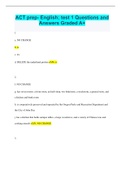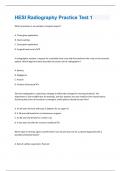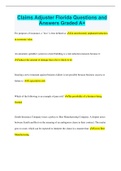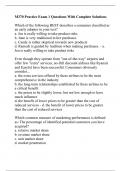Tentamen (uitwerkingen)
thar exam 2 Questions Rated 100% And Complete Solutions
rasa - ANS This is a term used in Sanskrit theater (100-900CE) which defines as a cumulative result of stimulus, involuntary reaction, and voluntary reaction. It asks the question of how enjoyment of theater comes, and focuses on the reaction of spectators. Different kinds include erotic,...
[Meer zien]













